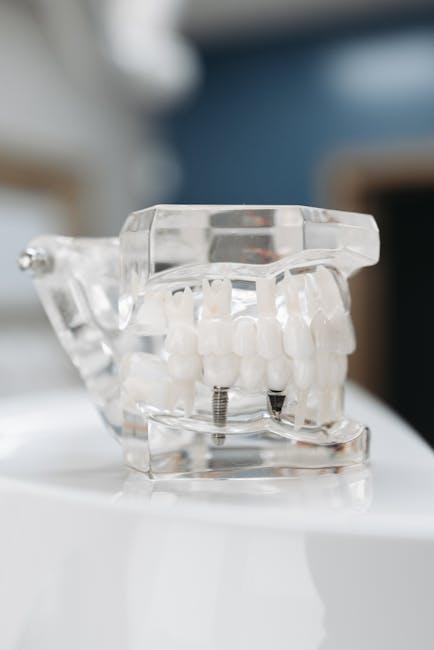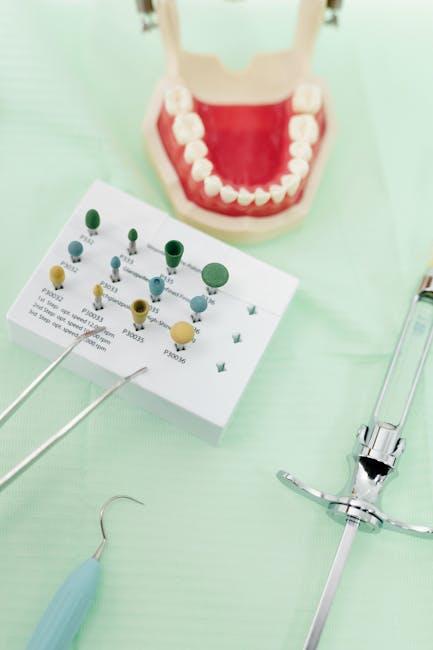
What if Dental Implants Could Feel More Like Your Real Teeth? – Tufts Now
Imagine smiling, chewing, and speaking with dental implants that feel just like your natural teeth. The experience of losing one or more teeth can affect confidence, comfort, and even oral health. But what if dental implants could not only replace your teeth but also restore the authentic feeling and functionality? At Tufts Now, cutting-edge dental research is exploring fascinating possibilities to revolutionize how implants integrate with our bodies.
The Current State of Dental Implants
Dental implants have become a reliable and popular solution for replacing missing teeth. They are titanium posts surgically inserted into the jawbone to serve as artificial roots, topped with crowns that imitate natural teeth. The primary benefits of dental implants include:
- Improved chewing and speaking functions
- Preservation of jawbone density
- Long-term durability and success rates
- Enhanced aesthetics compared to dentures or bridges
However, traditional implants lack the natural sensory feedback that real teeth provide. For many patients, this means missing the subtle tactile sensations that inform bite force, pressure, and texture — sensations critical to natural oral function and comfort.
Why Dental Implants Don’t Feel Exactly Like Real Teeth
The secret to real tooth sensation lies in the periodontal ligament (PDL), a complex network of nerves and connective tissue that connects each tooth root to the jawbone. The PDL:
- Detects pressure and movement in the mouth
- Provides invaluable sensory feedback to protect teeth and jaw from damage
- Facilitates micro-adjustments when chewing
Because traditional dental implants fuse directly to the bone (osseointegration) without this ligament, they lack this sensory feedback. This absence can lead to overexertion while chewing, subtle imbalance, or a feeling of something “foreign” inside the mouth.
Innovations from Tufts University and Beyond
Recent research at Tufts University is paving the way toward dental implants that better mimic the form, function, and sensation of real teeth. Some promising approaches include:
- Bioengineered Periodontal Ligaments: Scientists are exploring ways to regenerate or simulate the periodontal ligament around implants, restoring sensory nerve connections that mimic natural teeth.
- Smart Implant Surfaces: Advanced implant coatings encourage faster osseointegration and better tissue response, improving comfort and stability.
- Neuroprosthetics Integration: Experimental devices that interface implants with the nervous system to provide sensory feedback.
Benefits of Sensory-Enhanced Dental Implants
Envision a future where dental implants deliver more than mechanical function—they also bring back the oral sensation you thought was lost. This breakthrough could offer:
- Improved bite precision: Patients can better gauge chewing pressure, reducing risk of damage to the implant or opposing teeth.
- Natural oral proprioception: Enhanced communication between mouth and brain helps with food texture recognition and balance.
- Greater comfort and confidence: Feeling like your own teeth helps overcome the psychological barriers sometimes associated with implants.
Practical Tips for Supporting Natural Feeling with Current Dental Implants
While we await these future innovations, here are practical tips for patients with dental implants to maximize comfort and functional feel:
- Maintain excellent oral hygiene: Healthy gums and bone tissue around implants greatly affect comfort and sensation.
- Regular dental checkups: Professional monitoring helps detect bite issues early and adjust the implant crown if necessary.
- Address bite and jaw alignment: Orthodontic or occlusal therapy may improve implant function and reduce discomfort.
- Allow time to adapt: The brain often learns to compensate for reduced periodontal sensation over weeks to months.
Case Study: A Patient’s Journey at Tufts School of Dental Medicine
One patient treated at Tufts’ advanced research clinic shared their experience with a next-generation bioengineered implant:
| Parameter | Traditional Implant | Bioengineered Implant |
|---|---|---|
| Sensation or Feedback | Limited, no PDL sensation | Enhanced sensory input, near-natural feel |
| Chewing Comfort | Good but slightly unnatural | Very comfortable, natural bite |
| Adaptation Period | Several months | Weeks |
| Psychological Confidence | Moderate | High, more natural |
The patient noted a significant difference in the feeling of chewing and overall confidence in speaking and smiling with the bioengineered implant.
Looking Ahead: The Future of Dental Implant Technology
Dental implant technology is entering a new era defined by merging biology, materials science, and neurotechnology. Future implants may not just replace what was lost but restore full sensory integration, creating dental solutions that are truly indistinguishable from natural teeth.
As research from leading institutions like Tufts University advances, patients can look forward to:
- Personalized implant designs tailored to individual anatomy and sensory needs
- Improvements in implant materials that promote natural tissue integration
- Non-invasive procedures that reduce recovery time and improve outcomes
Conclusion
Dental implants have already transformed oral healthcare by empowering millions to smile and eat confidently after tooth loss. The exciting prospect that implants could soon feel just like real teeth promises to enhance this gift further by restoring the subtle sensations and comfort that define natural oral function. Thanks to innovative research from Tufts Now and other pioneers, the future of dental implants looks brighter—and more natural—than ever before. Whether you’re considering implants or simply curious about oral health advancements, staying informed on these cutting-edge developments will help you make the best decisions for your smile.
For more information about dental implants, emerging technologies, and oral care tips, explore Tufts Now and consult your dental healthcare professional.


